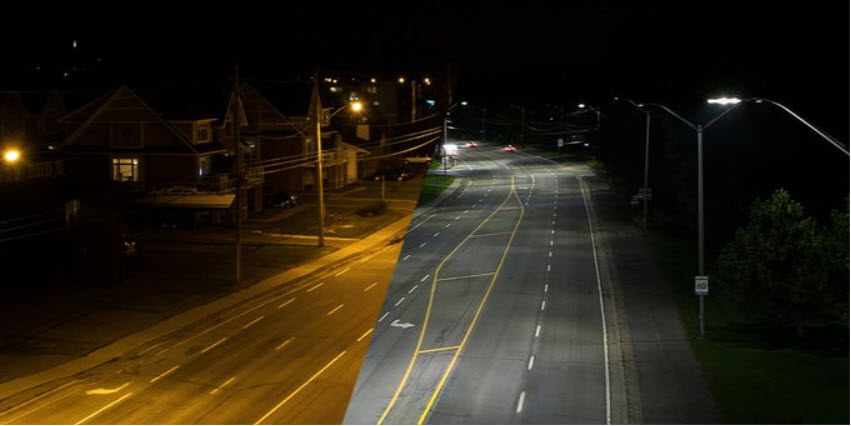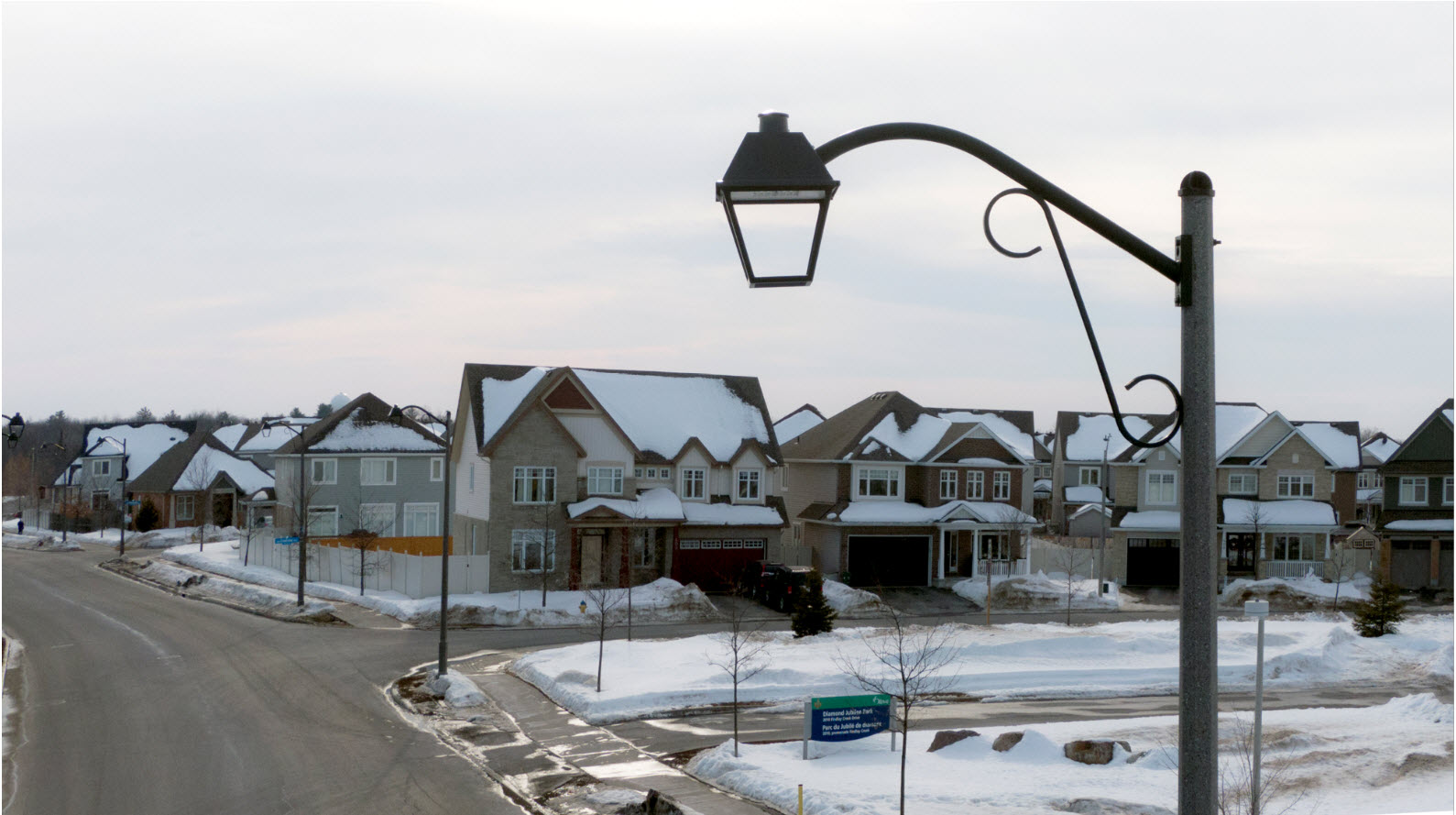Since 2016, Hydro Ottawa (through our subsidiary, Envari Energy Solutions Inc.) has converted 58,000 of our city’s streetlights from traditional high-pressure sodium and metal halide lamps to new Light Emitting Diode (LED) technology. But we aren’t stopping there.
Back in the mid-to-late 1800’s, the City’s naphtha and gas-fueled lamp posts were lit every night by city-employed streetlighters traveling either on horseback or on foot. In 1884, our predecessor company, the Ottawa Electric Light Company was granted the responsibility of installing and maintaining electric streetlights for the City. It went so well that just a year later all of Ottawa’s 199 streetlights were converted; prompting the May 1, 1885, edition of Ottawa’s Daily Citizen newspaper to proclaim that the streetlights placed Ottawa “ahead of any city in America.”
A year earlier, nearby Pembroke, Ontario, achieved the distinction of being the first town in Canada to switch on the first electric streetlight.
No matter the source of light or their origins, we’ve come to rely on streetlights for safety, to beautify our neighbourhoods, and to light our way home each night. A study by University College London shows that only a quarter of all travel by car happens between the hours of 7 p.m. and 8 a.m., yet this period accounts for 40 per cent of fatal and serious injuries to drivers. By artificially extending the hours of light and improving our visual acuity, our neighbourhoods and roads are safer for drivers, cyclists and pedestrians.
Just like the City of Ottawa recognized efficiencies with modern technology at the turn of the 20th century, the City once again acknowledged that it was time for a 21st century upgrade. At Hydro Ottawa, we’ve always been proud of our contributions to keep Ottawa’s streets lit and safe - and we’ve continually looked for ways of making our product and services more energy-efficient and sustainable for future generations.
Ottawa’s LED streetlight project, with its adaptive dimming and networked lighting control system, has decreased the City’s carbon dioxide emissions by a remarkable 1,261 metric tonnes every year, and translates into a cumulative 66 per cent reduction in energy consumption; equivalent to 113,600,000 kWh and $5 million in annual savings.
Maintenance costs have been significantly reduced thanks to the LED conversion project, enhanced monitoring and daily reporting capabilities.
We all know LEDs last longer, have several colour temperature options, consume less energy, and are dimmable, but they can also reduce light trespass and light pollution into our night sky. It just made sense to apply this technology to some of our other favourite spots around town.
In 2021, we began upgrading the decorative lighting found more commonly in our city’s parks, along walking paths, at recreational facilities, and in neighbourhoods where decorative lamp posts were favoured for their design appeal over traditional lighting.
We’ve made incredible progress to date. There are 17,000 streetlights remaining, mostly right-of-way luminaires including decorative streetlights, pedestrian lights, and coach-style streetlights. Converting these to LED will lead to further energy and maintenance savings and efficiencies for the city.
As with our other conversions, light levels are re-engineered to the precise levels recommended by the Right of Way Lighting Policy and all new LED luminaires are dimmable using a state-of-the-art networked lighting controls system.
Ottawa has come a long way and we are excited to continue innovating. With all of the benefits that LED streetlights bring, we are committed to enhancing the nighttime environment, one energy-efficient luminaire at a time.


